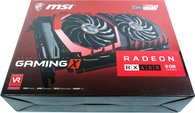
MsI relies on tried-and-tested radiator technology for the RX480 Gaming X 8G and remains reasonably true to itself. With the clock, the predetermined 1303 MHz sets the boost to a good, but not the highest possible factory overclocking. In addition, one traditionally relies on above-average power limit and a very conservative fan control with low temperature limit. We will see how well this works in practice.
Although MSI does not seem to place a particular focus on the map, as evidenced by the advertising and the initially very modest availability of samples for the media, the product as such is quite fine and would have a little more attention from the company's own marketing.
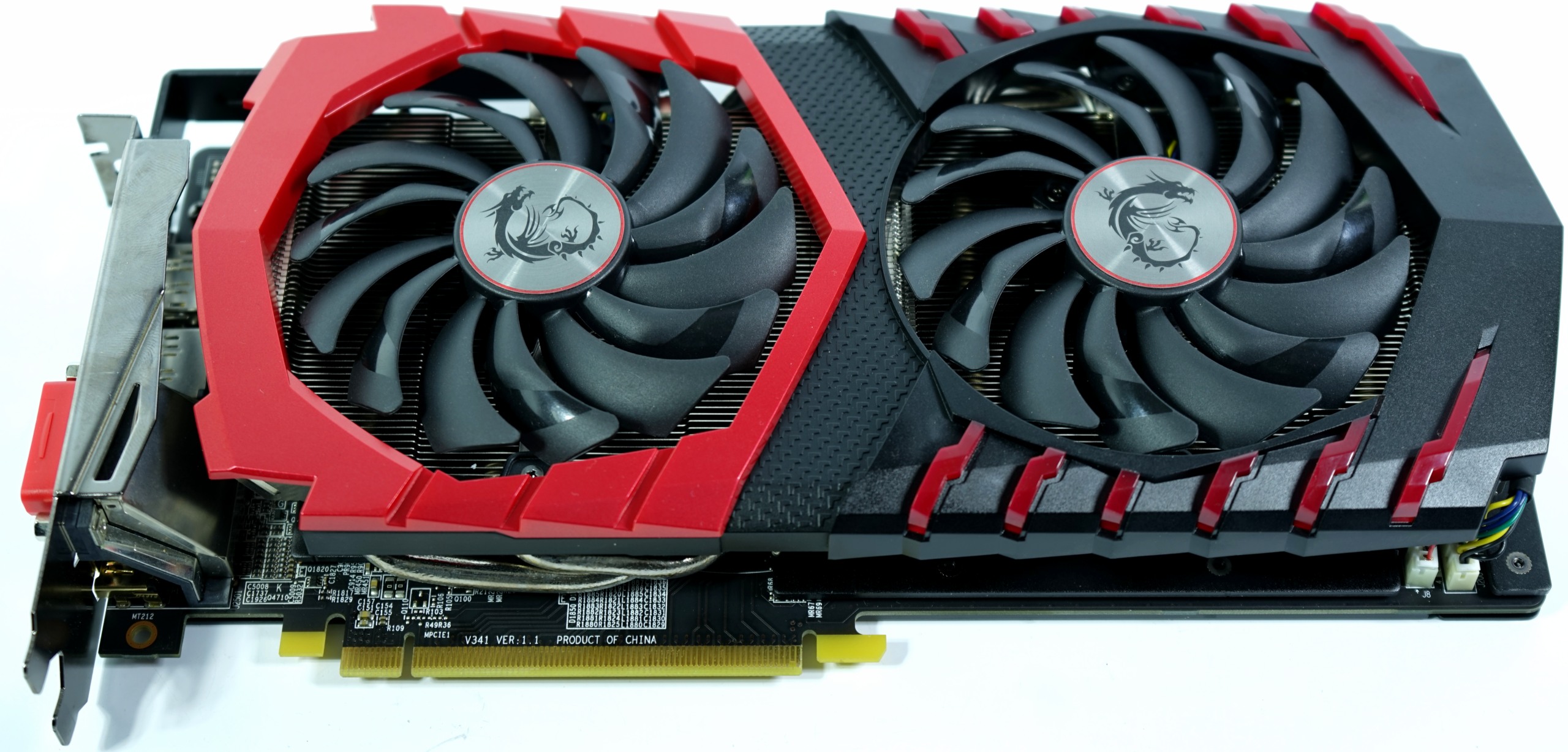
1. External appearance and key data
At 974 grams, you only narrowly miss the full kilo, but it is not the heaviest card in the test. With a true installation length of 27.5 cm (slot panel outside to rear edge radiator cover), a mounting height of 13.5 cm (upper edge slot to top edge radiator cover), and a mounting depth of 3.5 cm, it is also a true dual slot card.
The backplate requires an additional 0.5 cm of installation depth on the back, which has to be taken into account in ITX projects and CPU tower coolers. Purely visually, the map shows the usual MSI design, beautifully following its own corporate idendity. Recognition factor 100%.
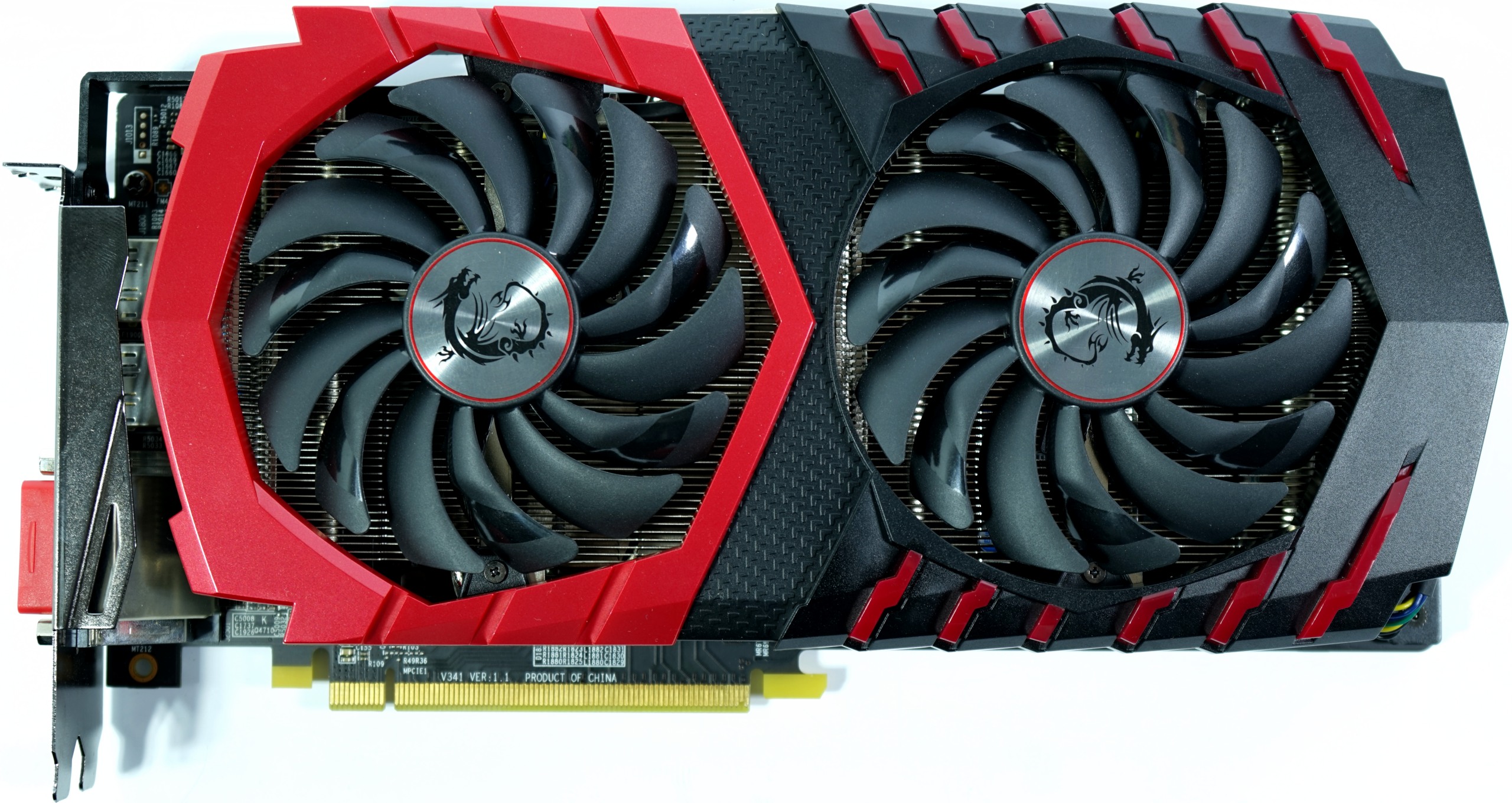 |
 |
The plastic radiator cover is now haptically not a real revelation, purely visually it is acceptable, especially since MSI with the red aperture part still offers an eye-catcher. We already know the two fans from other MSI cards with this cooler expansion stage. The rotor blades are double ball bearing and have a diameter of 9.5 centimeters each, which explains the very high structure of the map.
The slat alignment is horizontal, which relieves the motherboard below the cards and helps to transport some of the warm exhaust air through the slot panel. At the top, an illuminated MSI logo and the 8-pin PCIe power supply connector dominate the image.
 |
 |
The end of the card shows us once again the slat cooler, while on the top and bottom you can see the two continuous 6 mm heatpipes. On the top, the shorter 8 mm heatpipe is added.
The slot panel is equipped as standard and carries a DVI-D connector, three connectors for the DisplayPort 1.4 and an HDMI 2.0 output. In between are air openings, which release some of the waste heat outwards.
 |
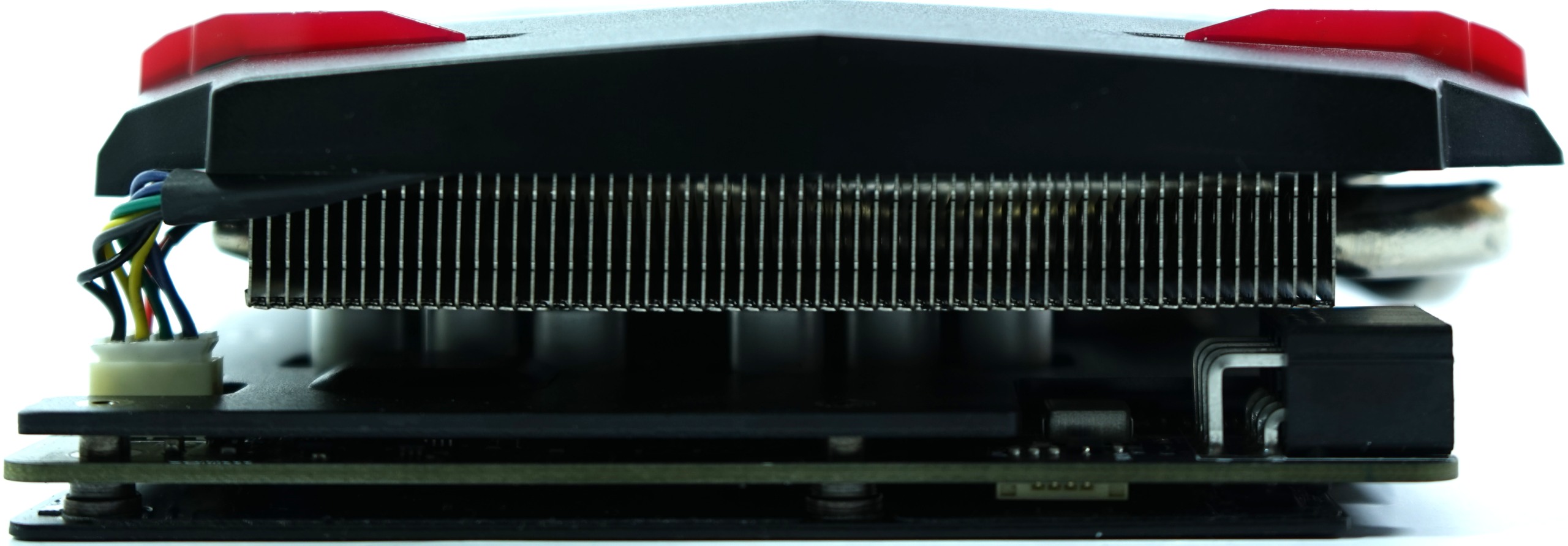 |
2. Board layout and power supply
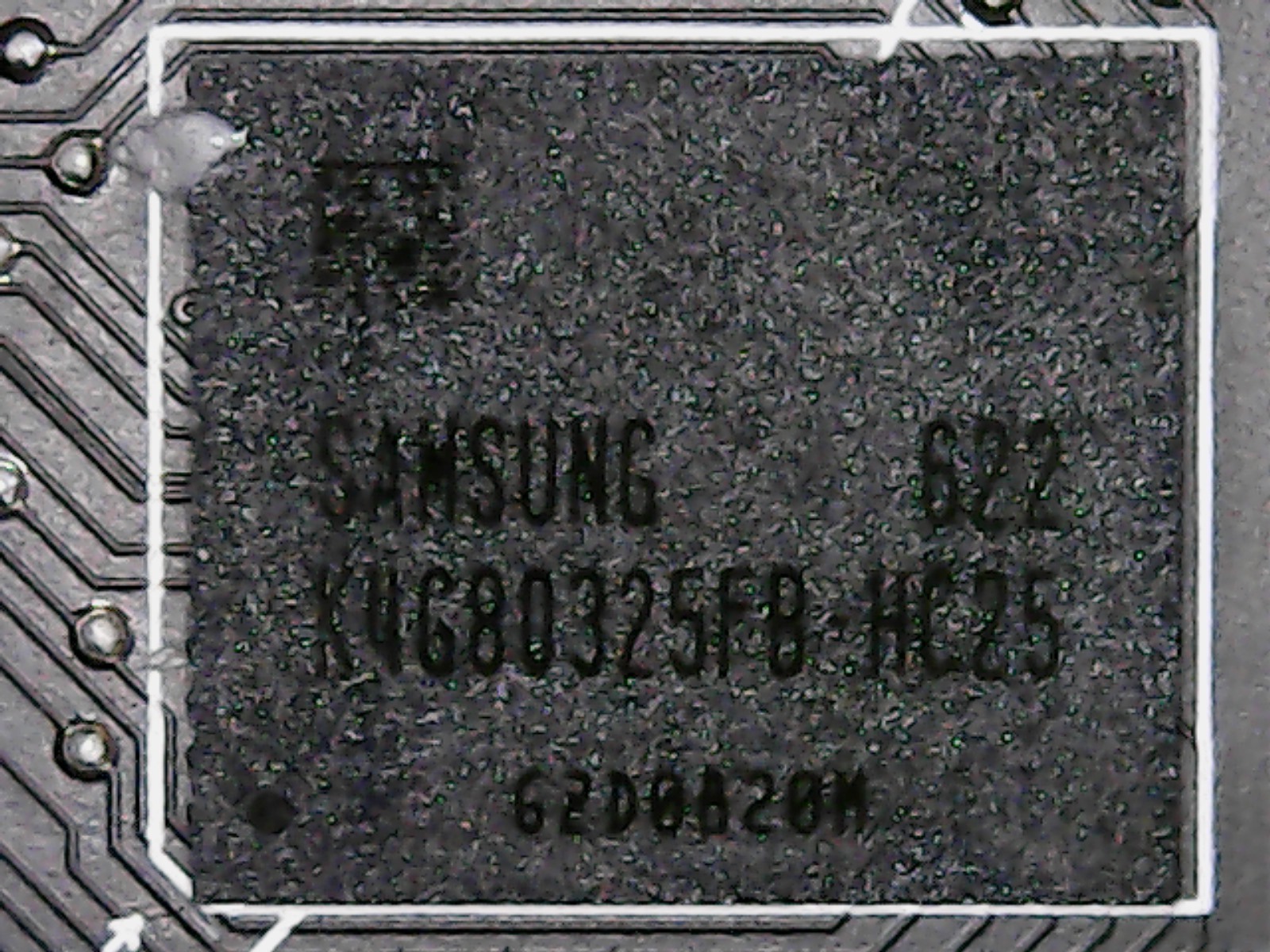 If we take the backplate, the cooling and stabilizing frame, as well as the cooler, we can take a look at the board. MSI positions the voltage converters for the GPU all on the right side towards the end of the card, while the two individual phases for memory and peripherals/controllers are arranged on the left side. This is the completely reverse path to HIS.
If we take the backplate, the cooling and stabilizing frame, as well as the cooler, we can take a look at the board. MSI positions the voltage converters for the GPU all on the right side towards the end of the card, while the two individual phases for memory and peripherals/controllers are arranged on the left side. This is the completely reverse path to HIS.
In terms of storage, MSI, like its competitors, relies on a total of eight 1GB DDR5 modules from Samsung with the K4G80325FB HC25. This consumer memory is specified for operating temperatures of up to 85°C and is operated on this card with 2000 MHz.
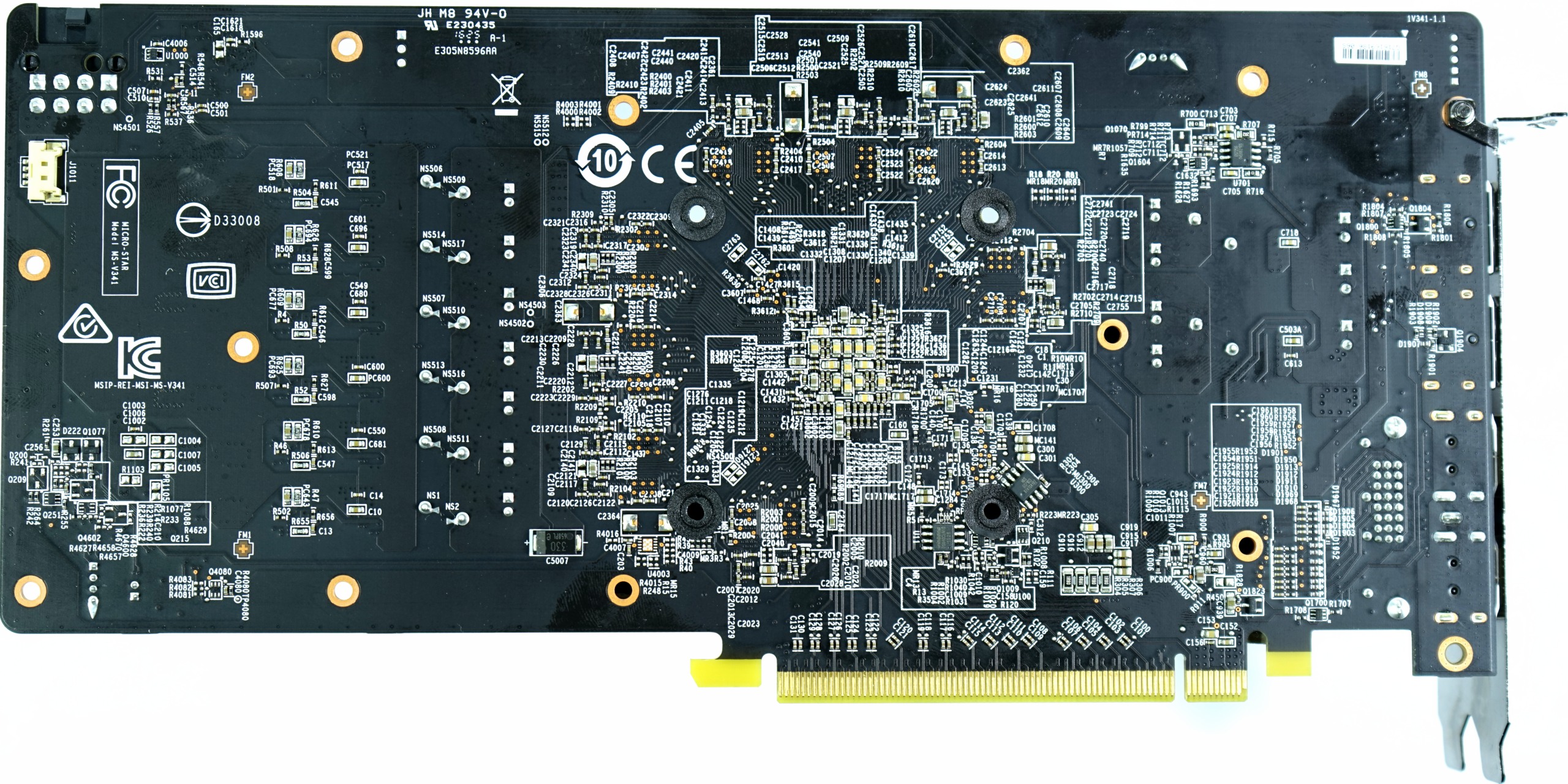 |
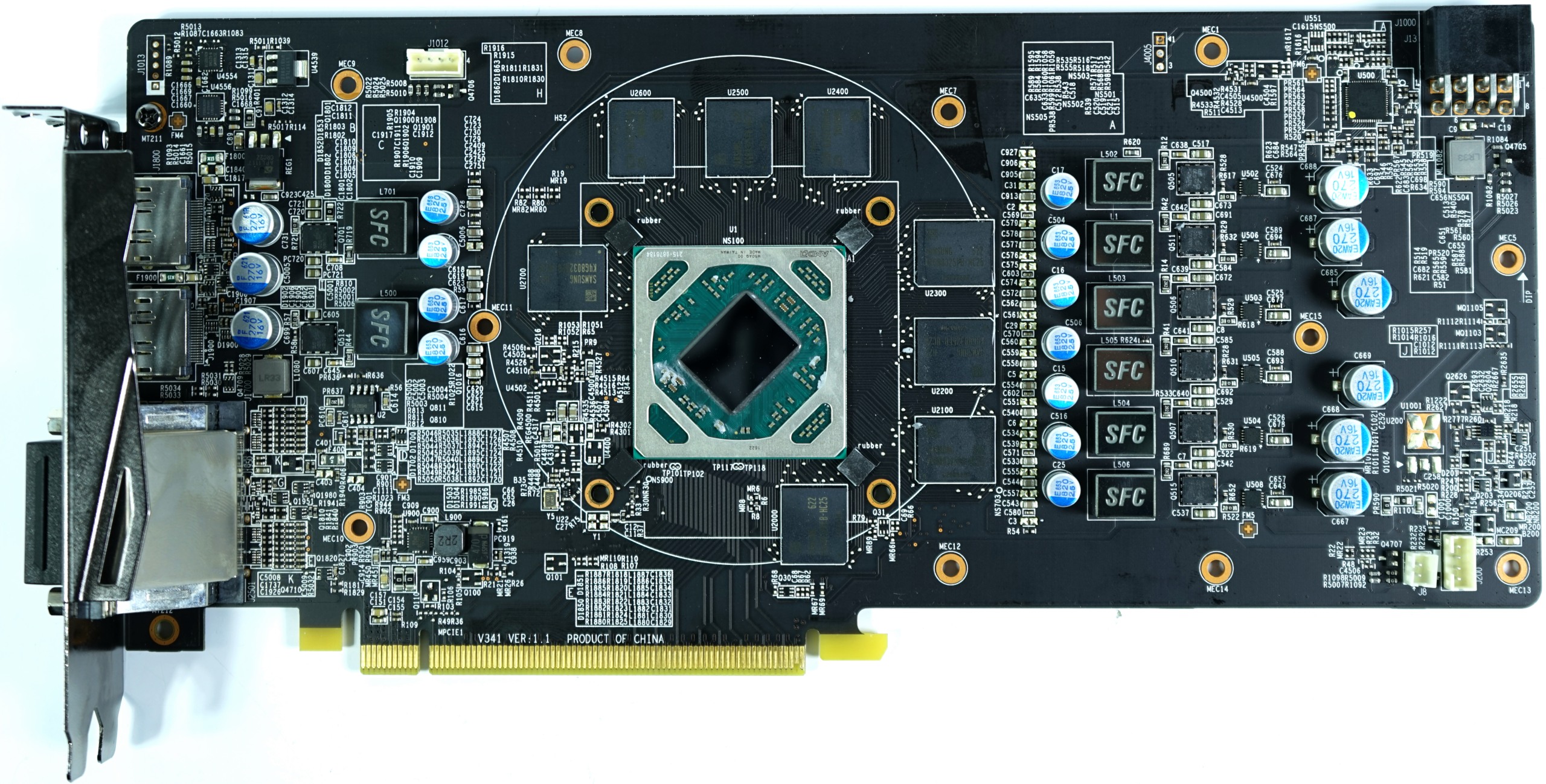 |
The GPU relies on six individual phases provided by an IR 3567 from International Rectifier. The voltages are generated at each phase via a CHL 8510 as a gate driver, which controls the highly integrated MOSFET of the control circuit.
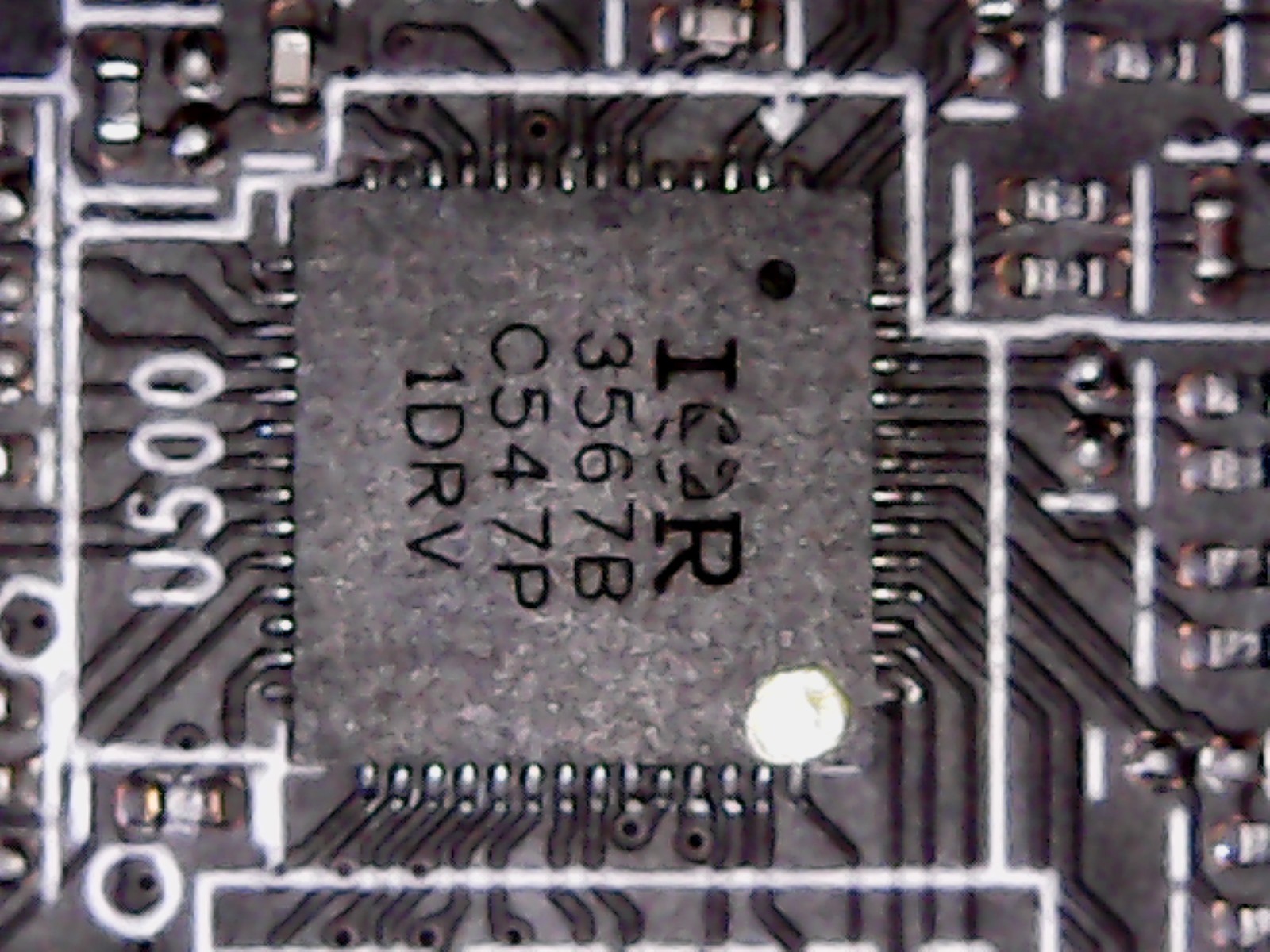 |
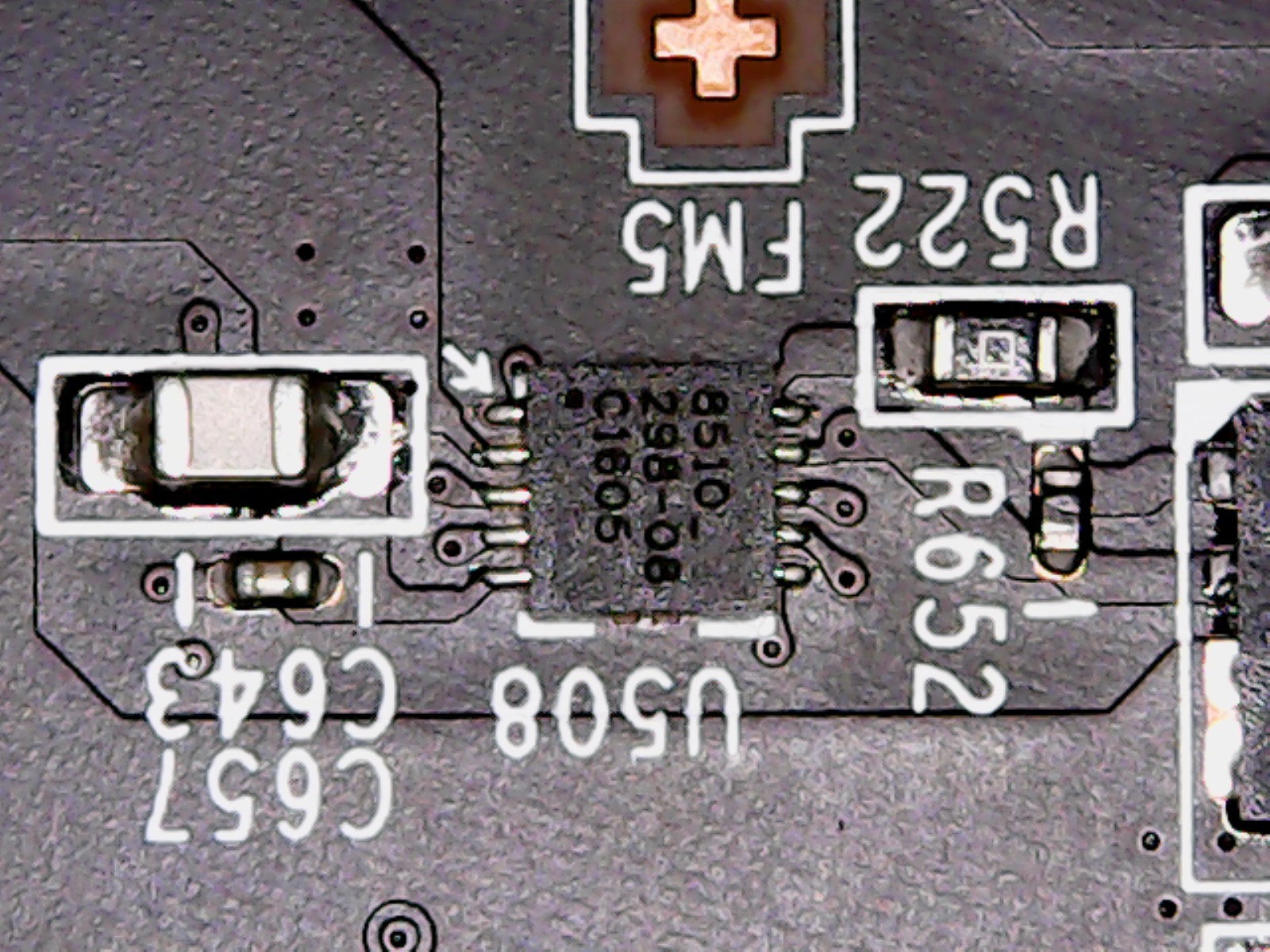 |
The actual tension transformation takes place and on the low-side via a dual-N-Channel MOSFET 3816, which combines the MOSFETs for high- and low-side, as well as a Schottky diode. This saves space, but can also create an unnecessary hotspot if the cooler is under-dimionized.
The coils used rely on normal, encapsulated ferrite coils, which have been shed in a thin-walled housing. Labeled and advertised as SFC (Super Ferrite Chokes), they are at least higher quality than the usual suspects on the reference designs.
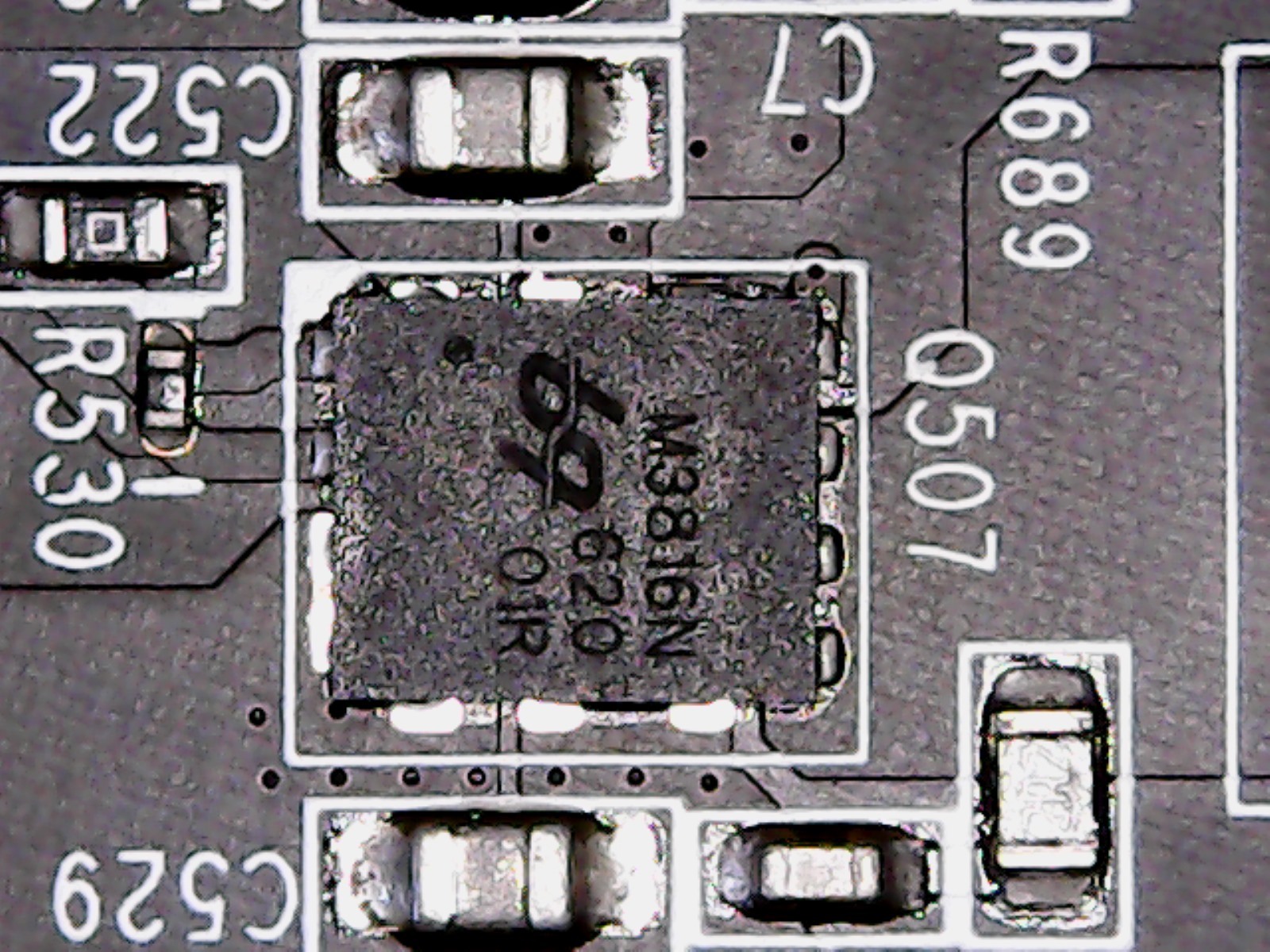 |
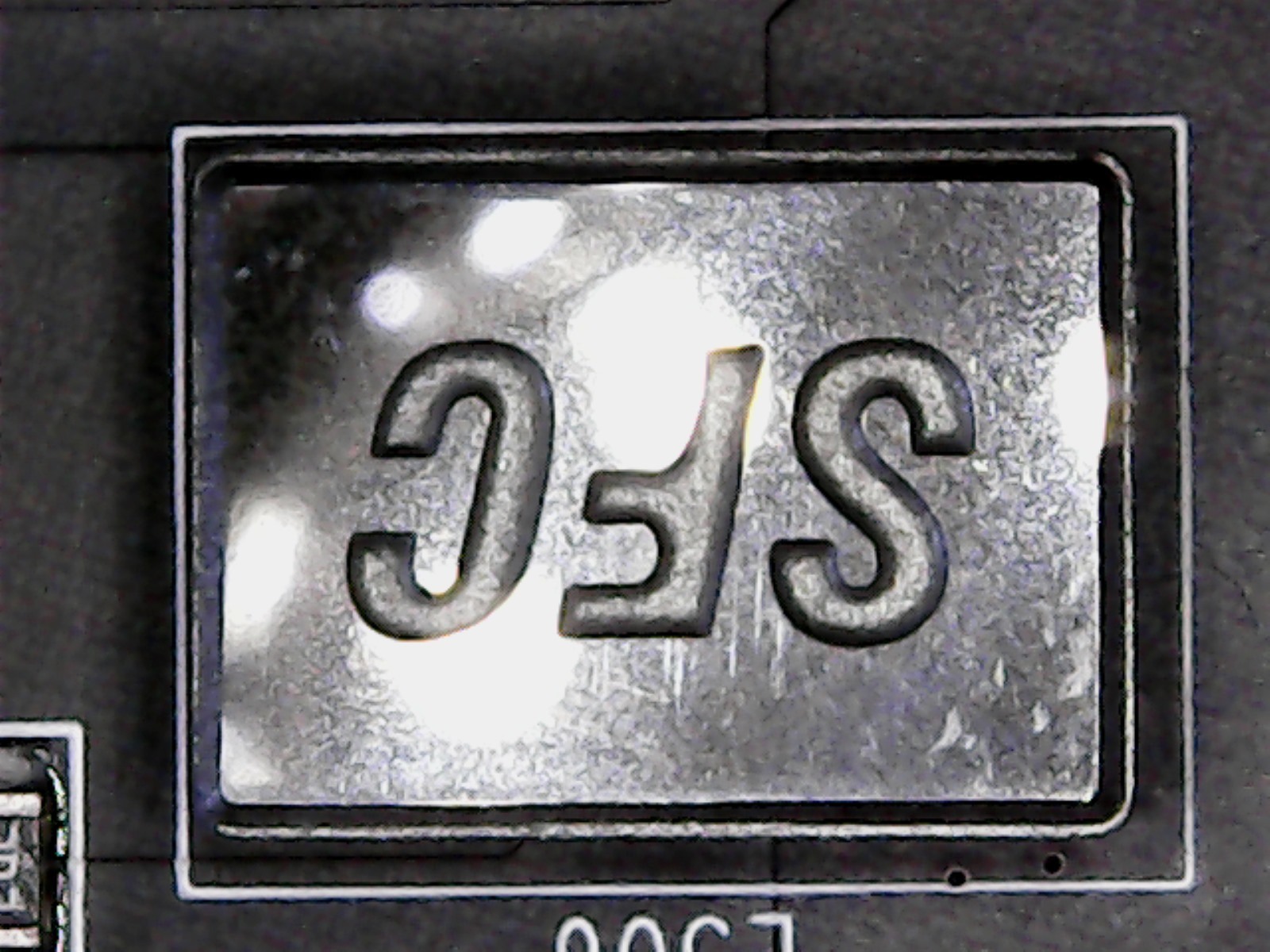 |
In the case of the voltage converters for the memory, a rather conservative solution is used, whereby a phase on the left side of the board must suffice. A second voltage converter, which at first glance is similarly designed, then supplies the peripherals and the controllers. With the GS7225 from GStek, you rely on an ACOT Synchronous Step-Down Converter, which controls a single dual-N-channel MOSFET 3816, which we have already seen as a complete solution during the phases for the GPU.
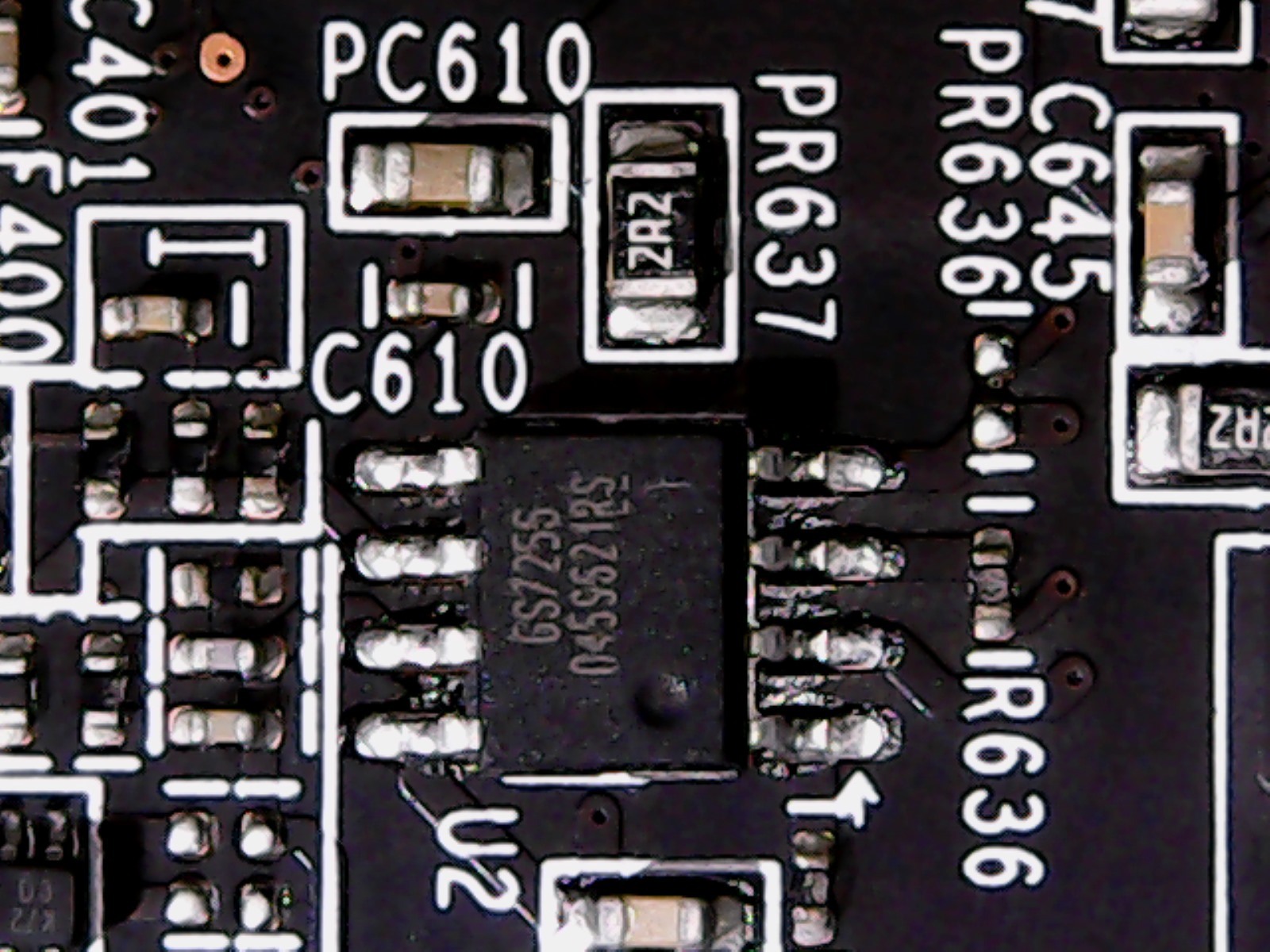 |
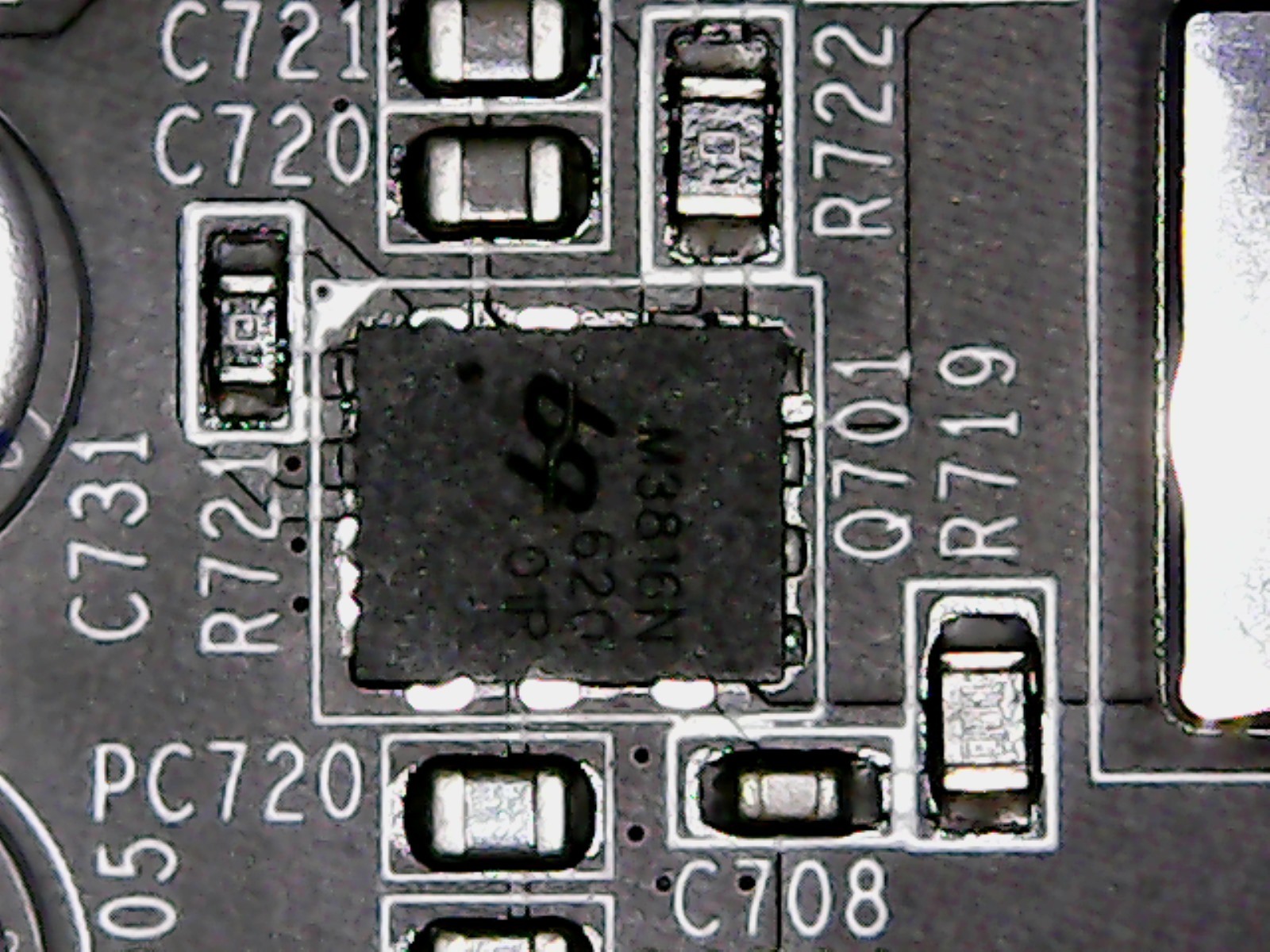 |
3. Power consumption and compliance
Even with this overclocked map, the power consumption is still significantly higher than what we were able to measure for the reference design. The almost 18 watts in the idle are no longer up-to-date, but are due to the generously sized voltages and the high idle clock of at least 300 MHz.
In the gaming loop, the map reaches approx. 191 watts, well above the reference map, while the Torture loop measured a proud 224 watts resulting from the very high power limit. Much more can hardly be done, whereby the peak values represent only short moment values, which do not have to be used as a guideline for the power supply measurement, but show that one should pay attention to a qualitatively appropriately equipped secondary side of the power supply (low Impedance Caps).
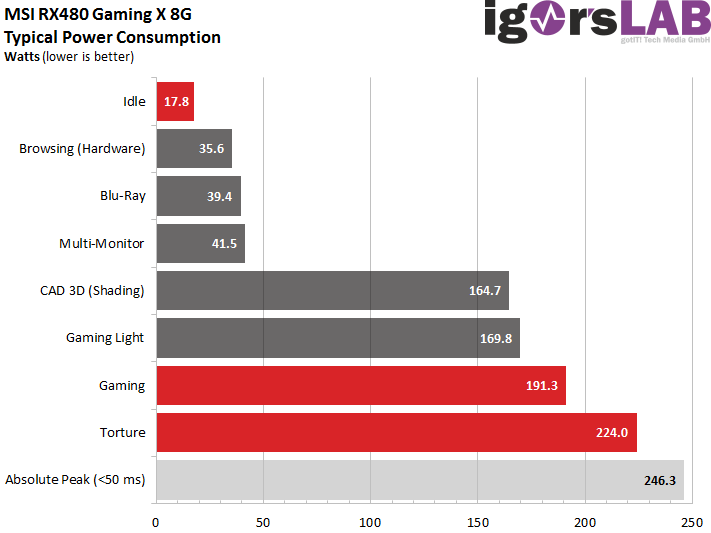
The two graphs that follow illustrate the course over 2 minutes each in the gaming loop and in the Torture test, on which the respective calculation of the average power consumption is based.
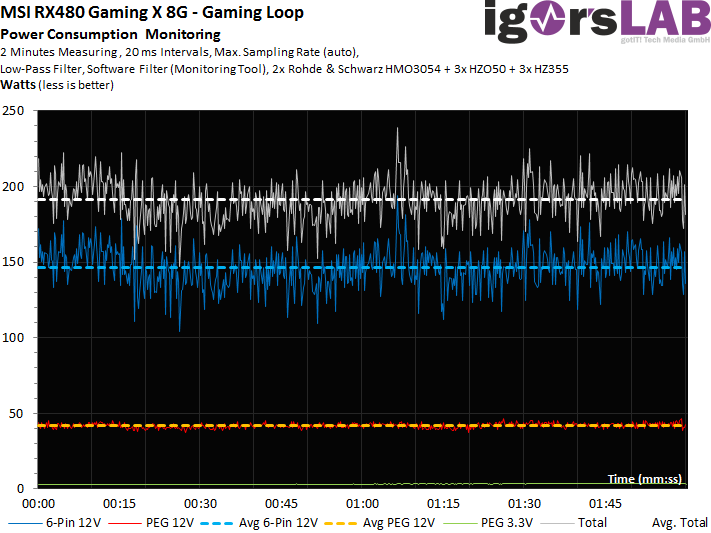 |
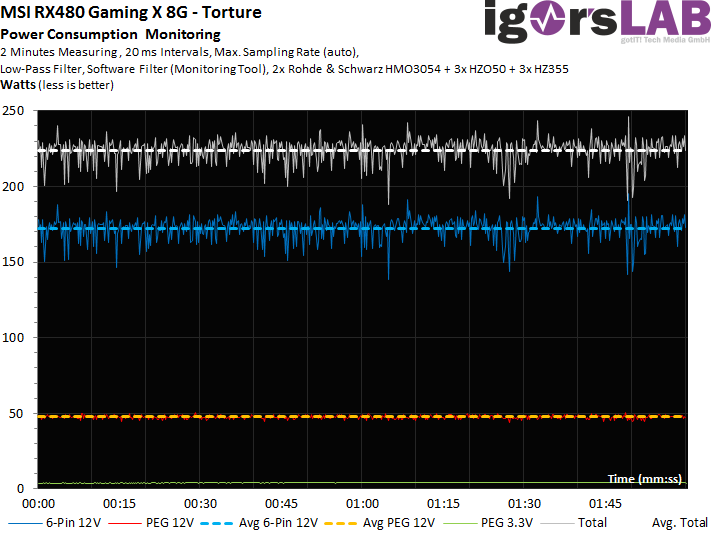 |
Now let's come to the evaluation of the flowing currents and they let the user sleep very quietly compared to some other maps. First, let's take a look at the current flows of the individual supply rails corresponding to the diagrams above:
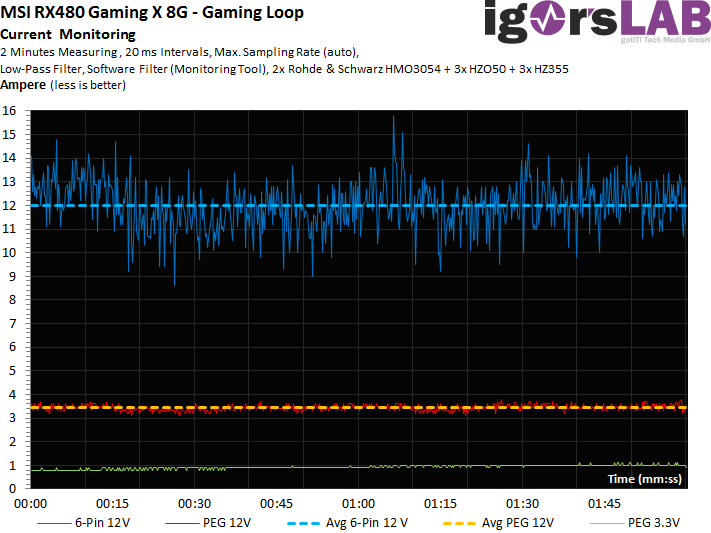 |
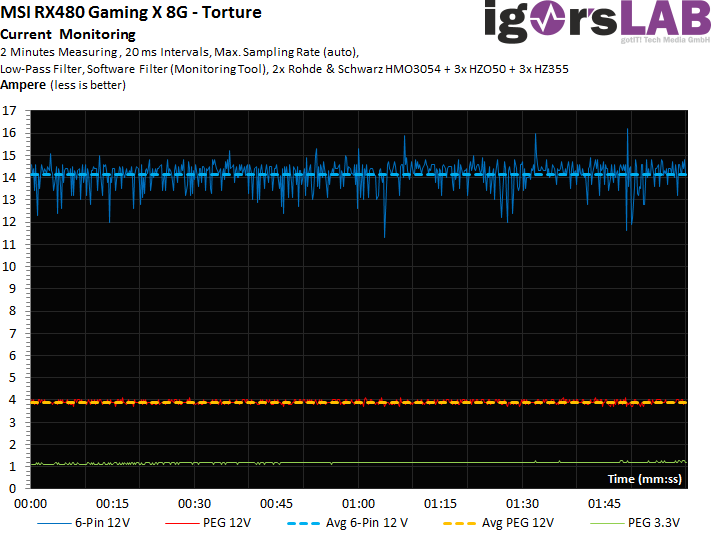 |
What we see can be reassuring. A total of 3.9 amperes instead of the maximum specified 5.5 amperes are a gentle rest ingenuity cushion also for older mainboards. Anyone who objects that the power consumption on the PCIe power supply connection thus exceeds the recommended 150 watts by 22 watts is reassured. We have already supplied up to 400 watts of real DC voltage and 300 watts of alternating loads via such a connection in our own tests, without overheating.
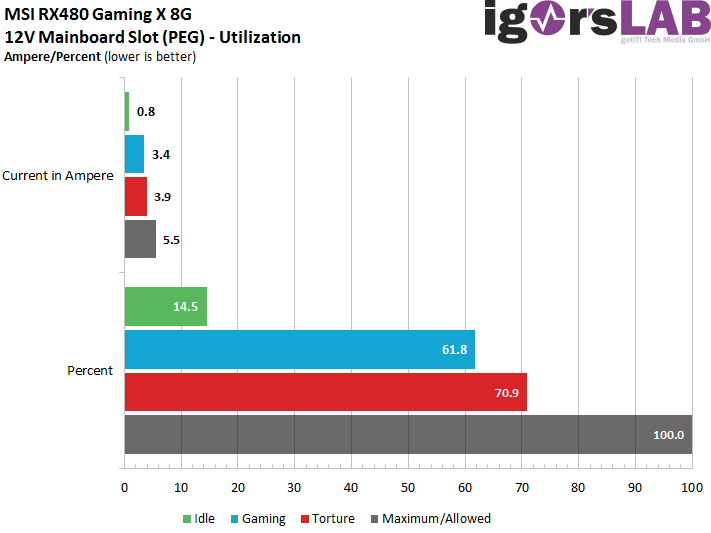
Since the supply on the external PCIe connector exceeds the specified 150 watts by up to 22 watts, it is important to connect this card directly with a neat 8-pin connector with AWG18 cable and to adapt to adapter solutions from 6 to 8 pins or to use Drive molex strands for supply are mandatory. That can go well, but it doesn't have to!
4th. Cooler structure and temperatures
The cooling concept relies on a semi-open sandwich construction. MSI uses a backplate insulated with foil inside, which is not included in the cooling concept and serves only for stabilization and optics, as well as a cooling frame, which also serves as a stabilizing counterpart to the backplate.
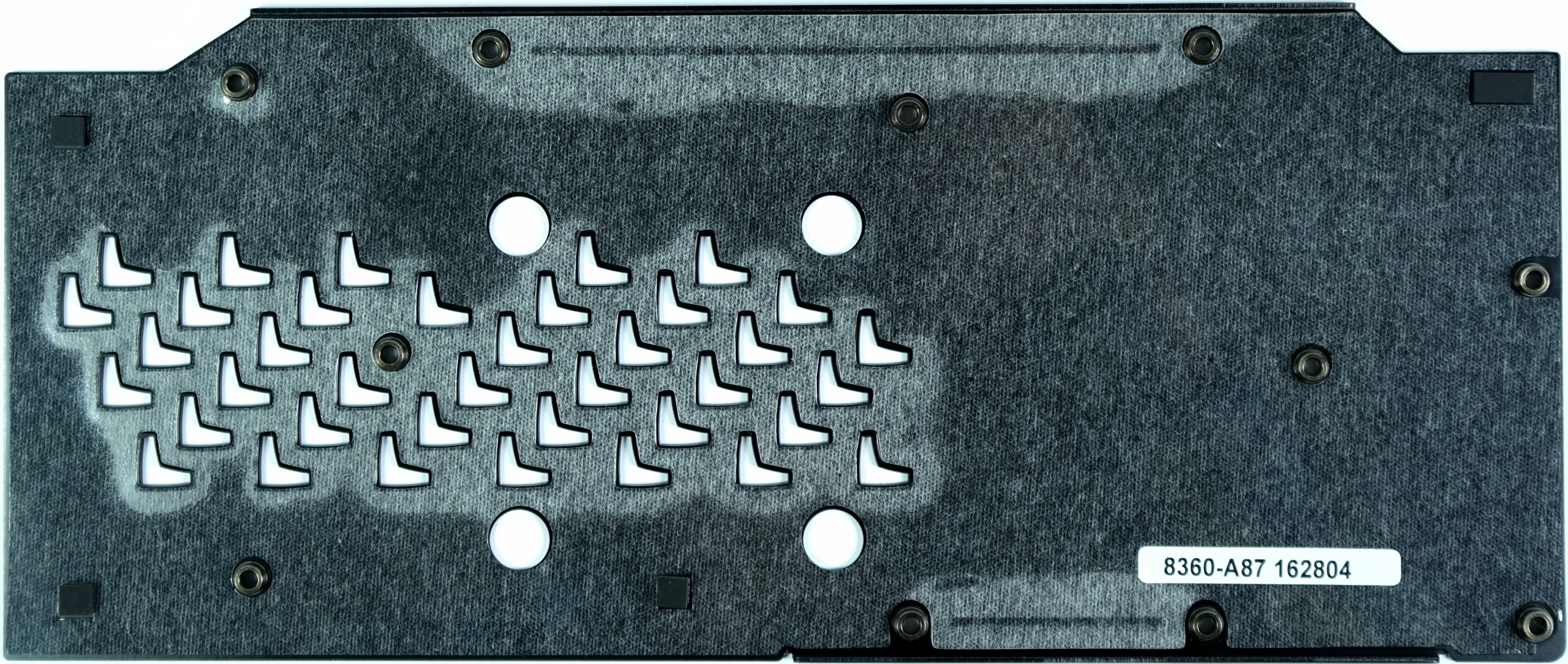 |
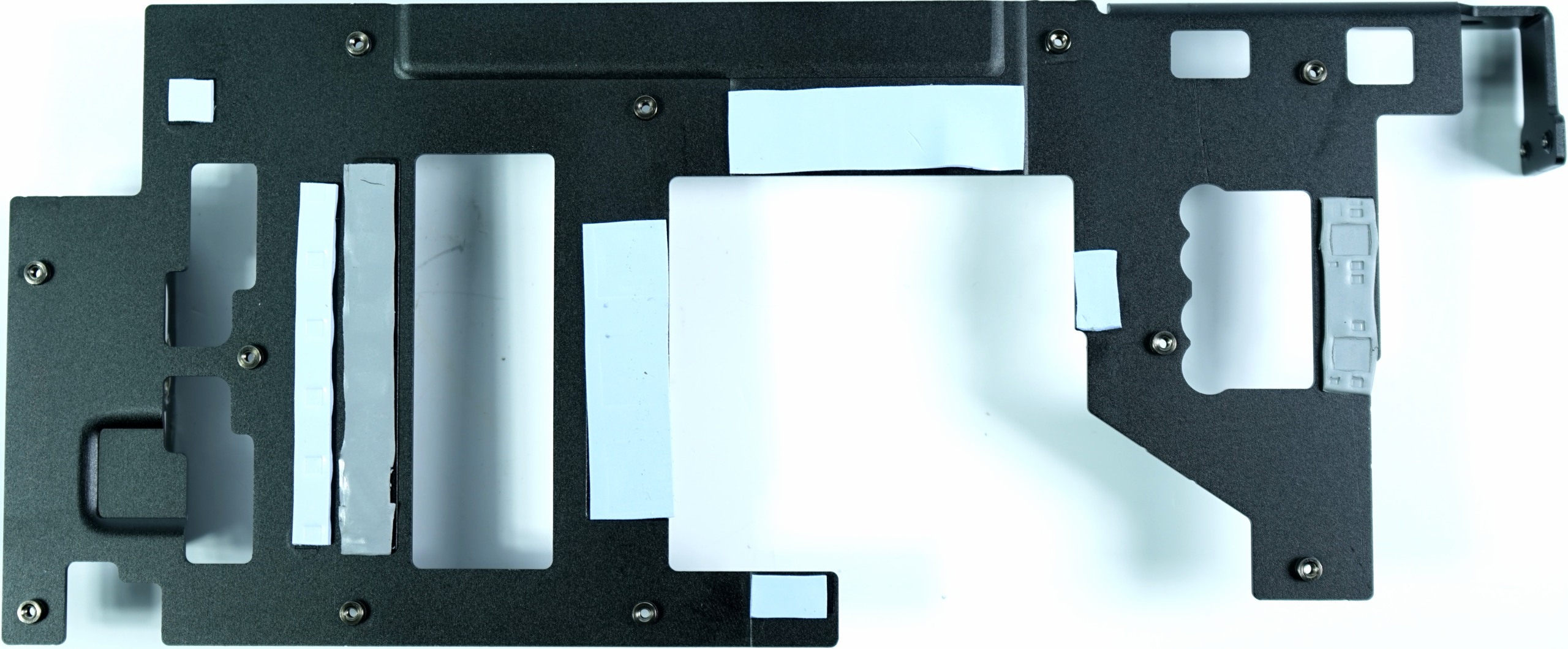 |
The memory is not cooled via the heat sink, but via this special frame below the actual cooler. Whether and how the concept works in this way, we will see in a while. MsI has left the areas around the coils and capacitors open, so that at least some airflow can also be used for direct cooling.
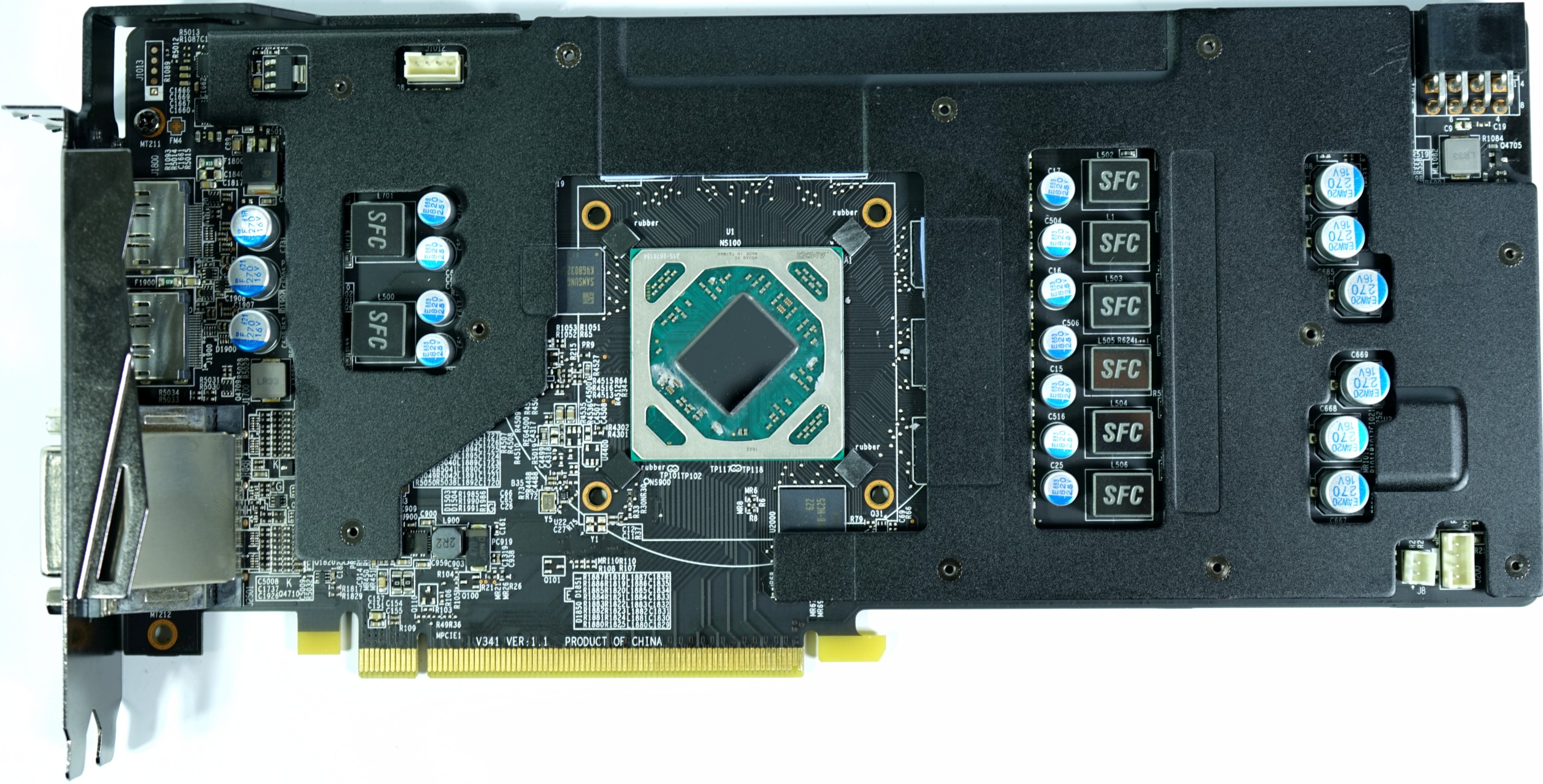
The cooler itself consists of a nickel-plated copper heat sink for the GPU, in which a total of 8 mm and two continuous 6mm heatpipes were pressed, which are made of sintered composite material and which have also been nickel-plated.
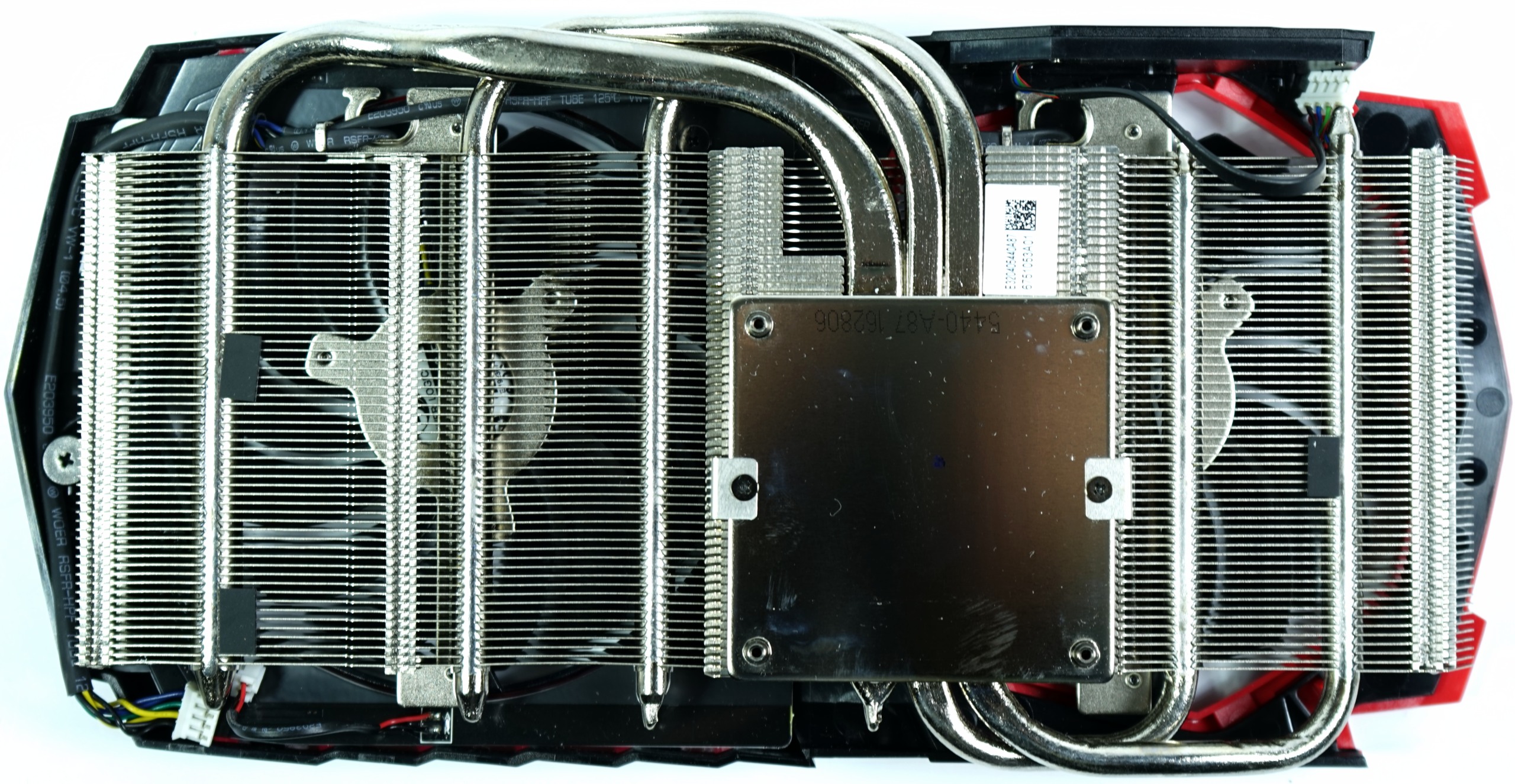
The cooling performance is good, because in the gaming loop the maximum clock of 1303 MHz is kept constant and only briefly breaks down by a few MHz. The fact that the temperatures in the Ore Loop are already breaking out properly is mainly due to the much too high power limit, which should be completely out of place at this height.
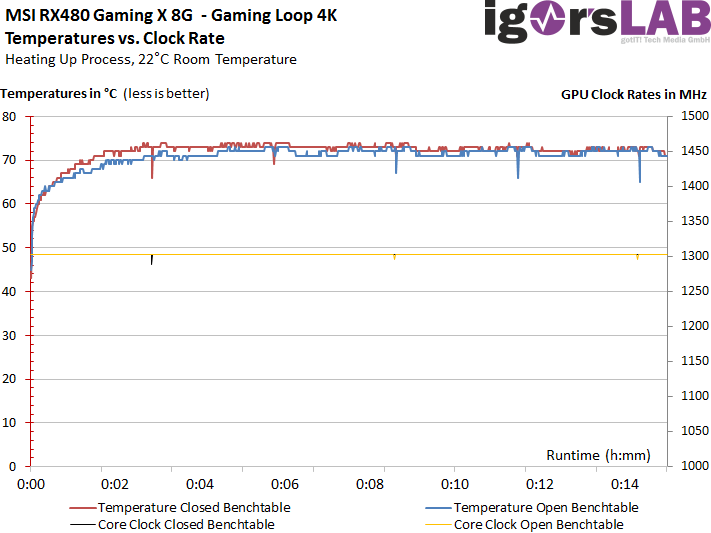 |
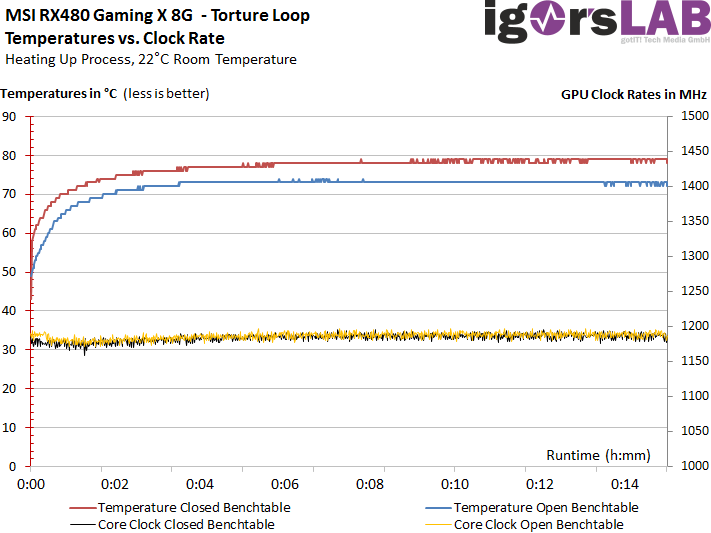 |
Let us now consider the temperatures not as a curve, but check what consequences the load leaves on the board. With just under 80°C at the gaming loop in an open and closed housing, you are still quite good at it. Interestingly, the GPU temperature in the closed housing is then soger one tick lower. We can see why this is the case and what the consequences are of the cause.
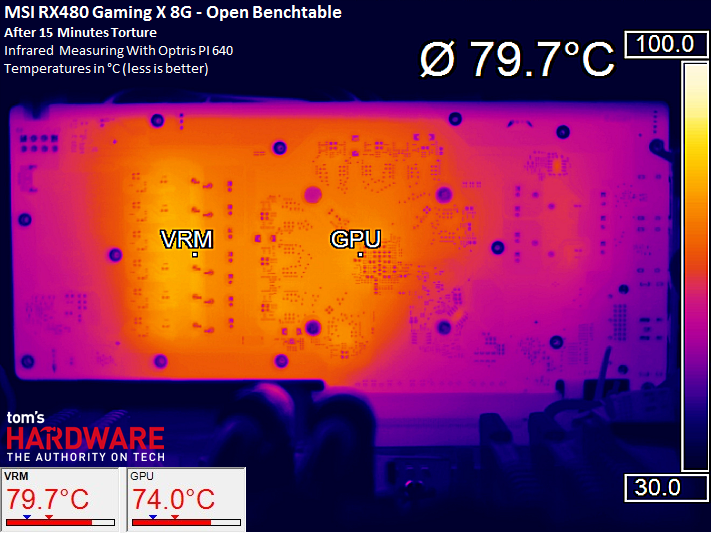 |
 |
In the stress test, we measure 80°C or 85°C for the voltage transformers. The CPU is still well in the race with a plentiful 73°C in the open setup. In the closed setup, we see the GPU at just under 80°C, whereby even here the warmest memory module falls well below the 80°C mark.
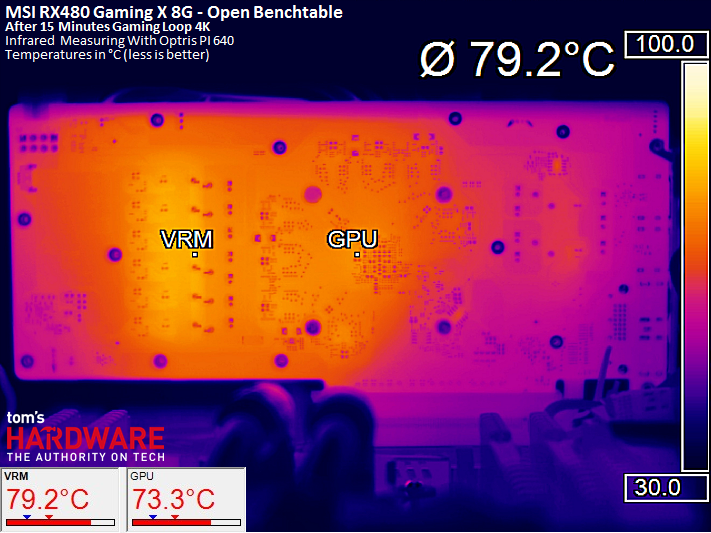 |
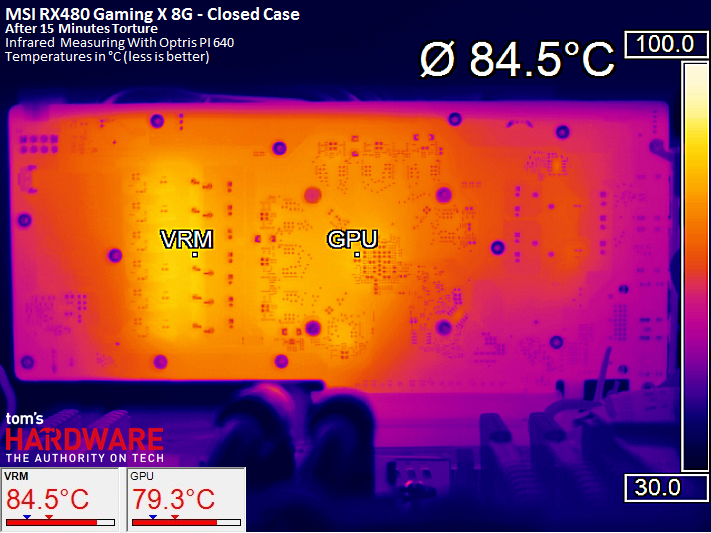 |
The cooling is therefore perfectly fine even in the closed housing, at least as long as one does not throw the stress test.
5. Fan speeds and noise emission
But where is the reason for the almost identical temperature of the card in the gaming loop in the open trailer or in the closed housing? If we look at the fan speeds, we will experience a somewhat unpleasant surprise. The fan curve is extremely aggressive lyadjusted above the target temperature of 72°C, so that the card can hold this value at almost any price. Unfortunately, this is already clearly audible and beyond what we are used to at MSI.
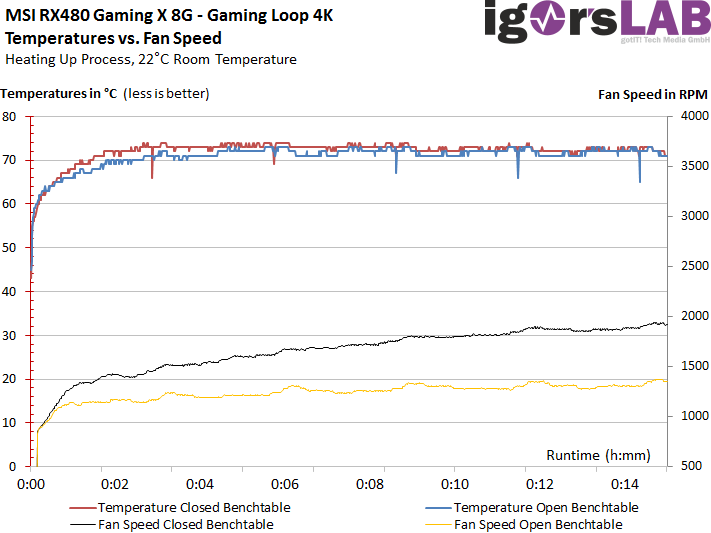 |
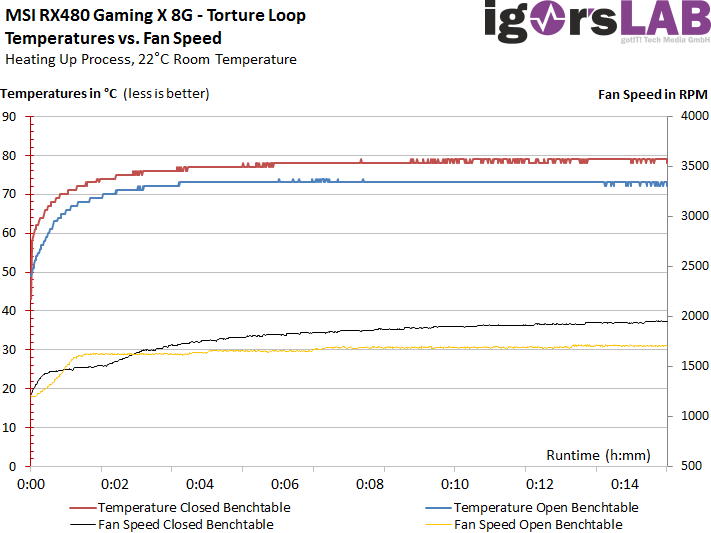 |
With almost 2000 rpm, the card is even approx. a dB(A) louder than the HIS RX480 IceQ X2 Roaring Turbo, with the sound character of the broadband sound carpet slightly more pleasant. But really quiet is really different! Why MSI does not allow at least 80°C and thus works towards a quieter map will probably remain its secret.
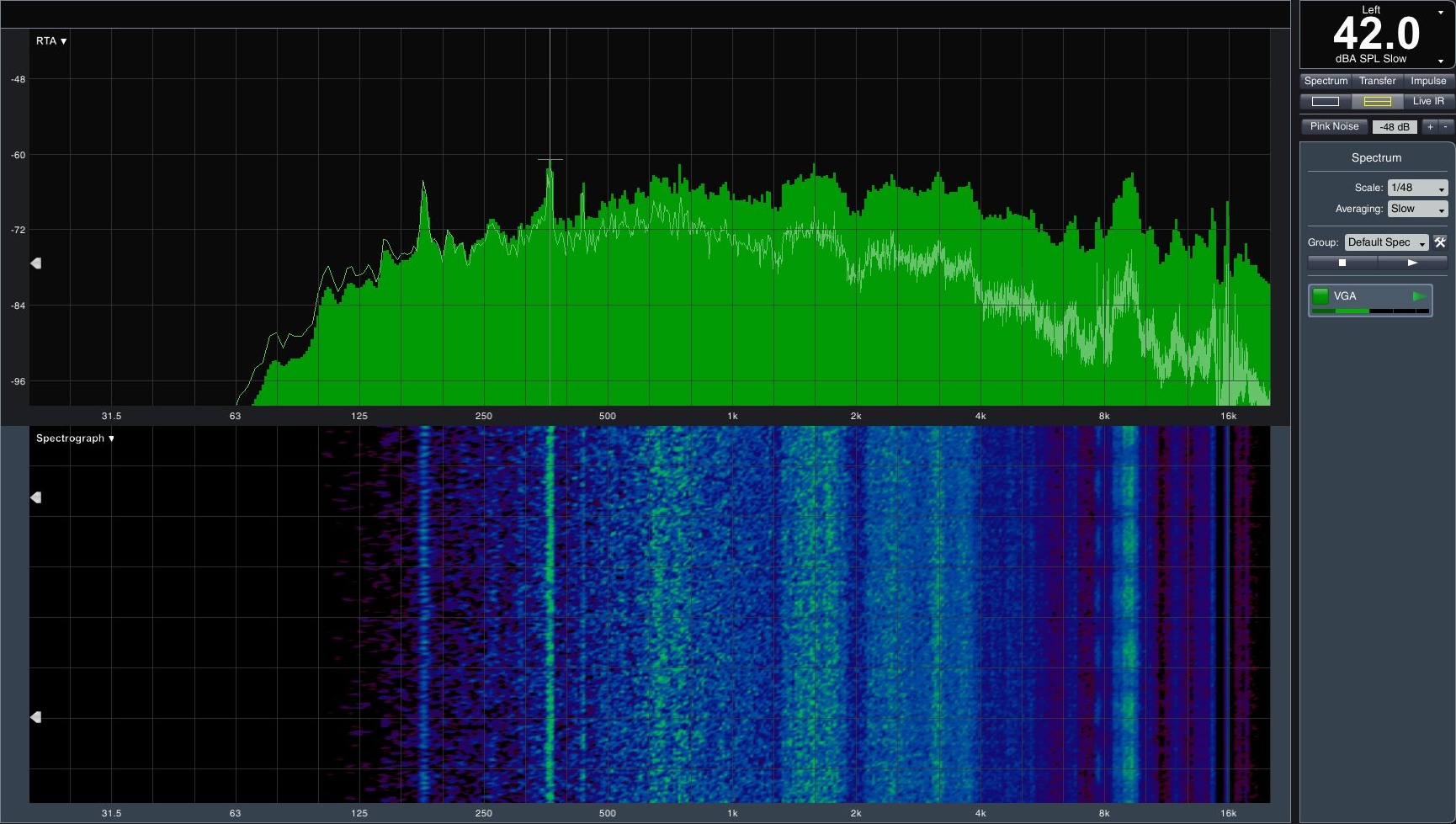 What also negatively wrinkles, is the peak between approx. eight and ten kilohertz. Initiates will know that they can assign this frequency range to the coils of the voltage converters. The slight snoring and chirping is therefore quite audible and measurable.
What also negatively wrinkles, is the peak between approx. eight and ten kilohertz. Initiates will know that they can assign this frequency range to the coils of the voltage converters. The slight snoring and chirping is therefore quite audible and measurable.
6. Intermediate conclusion
The MSI RX 480 Gaming X 8G is basically a solid and well thought-out card, where the only thing missing is the finish of the fan curve and whose slightly overstated power limit leads to unnecessarily high power consumption values under stressful conditions. The fact that this cannot be implemented in more FPS while playing is also annoying enough.
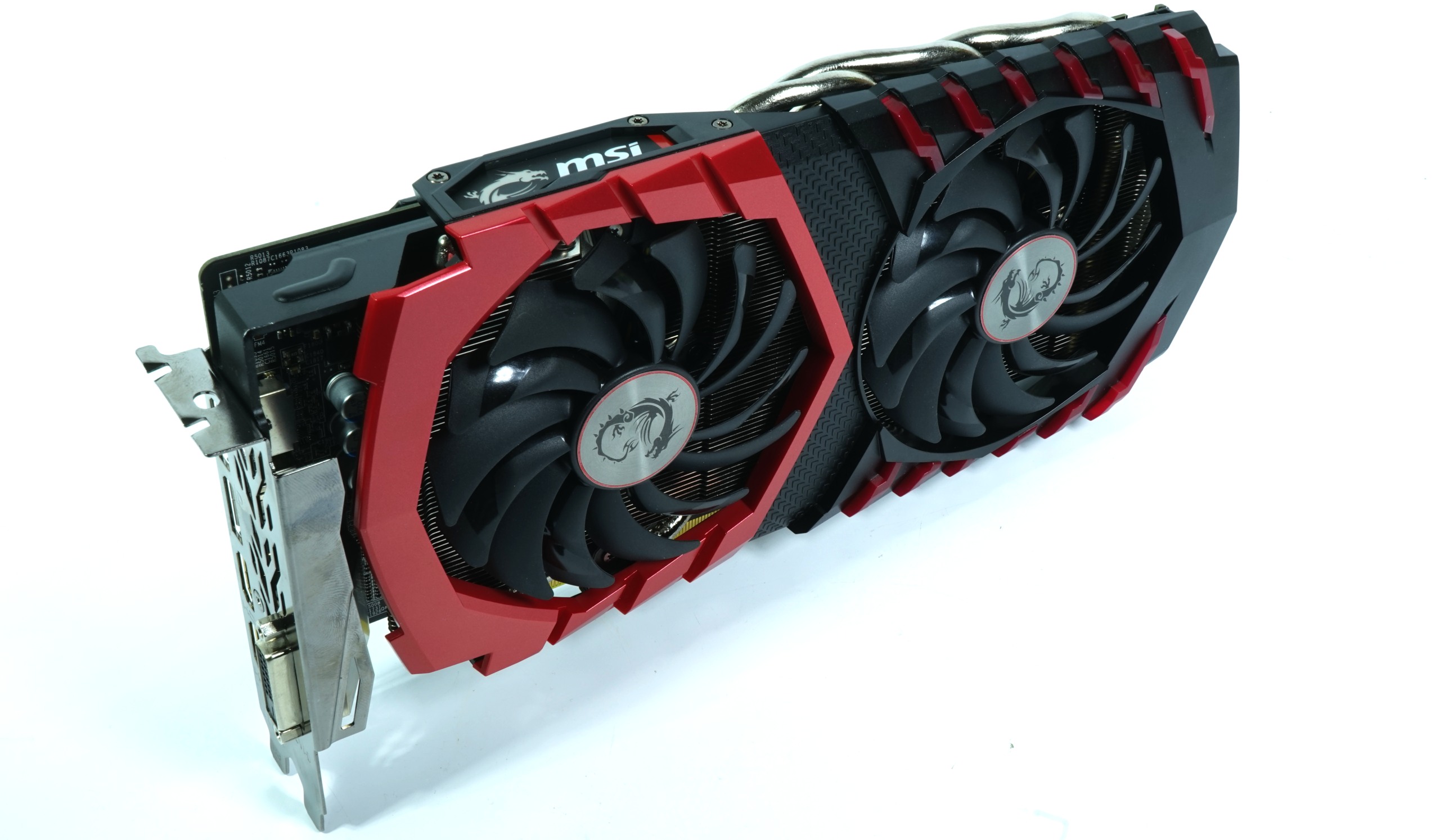
Cooling performance is adequate, but not excessively good, to allow even greater overclocking attempts in the closed enclosure without manual changes. This can only be achieved if the housing fans also guarantee a proper passage, which is of course connected with a further noise development. Otherwise, the fan speed will speed up to heights that are rather untypical for MSI and will annoy quite neatly.
The card should be operated on a power supply with a real 8-pin connector and at least AWG18 cables. For (especially older) low-cost power supplies, an unexpected reason for failure could arise here, which is actually unnecessary.
- 1 - Einführung, Übersicht und Test-Setup
- 2 - AMD Radeon RX480 Reference
- 3 - Asus RX480 Strix
- 4 - HIS RX480 IceQ X² Roaring Turbo
- 5 - MSI RX480 Gaming X 8G
- 6 - Powercolor RX480 Red Devil
- 7 - Sapphire RX480 Nitro+
- 8 - XFX RX480 GTR Black Edition
- 9 - Übersicht: Gaming-Performance
- 10 - Übersicht: Temperatur, Lautstärke und Leistungsaufnahme
- 11 - Zusammenfassung und Fazit

































Kommentieren